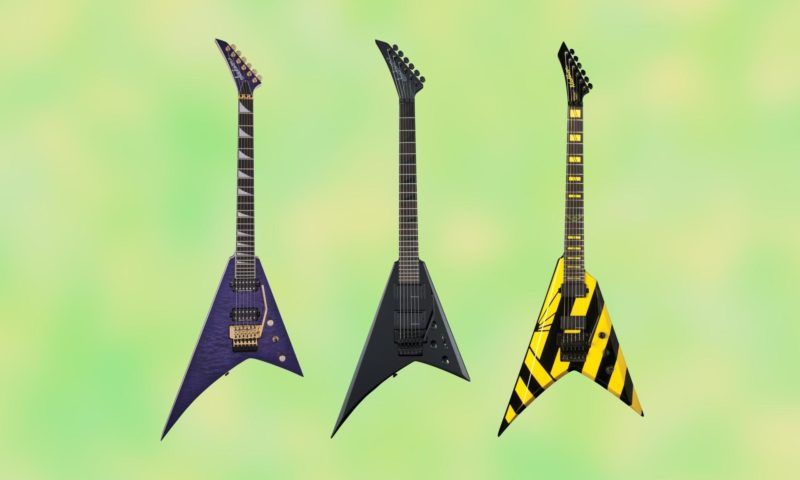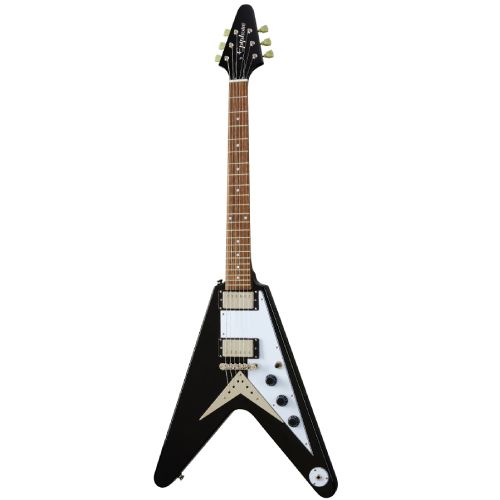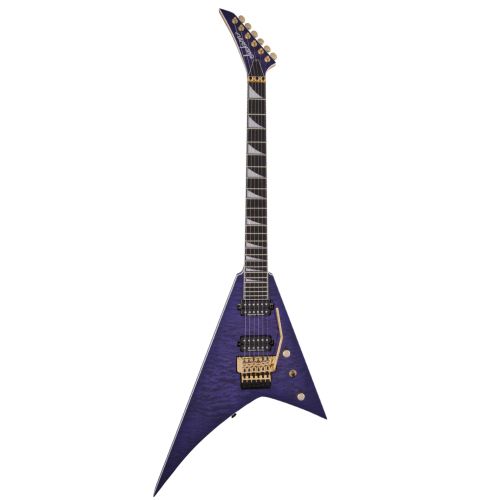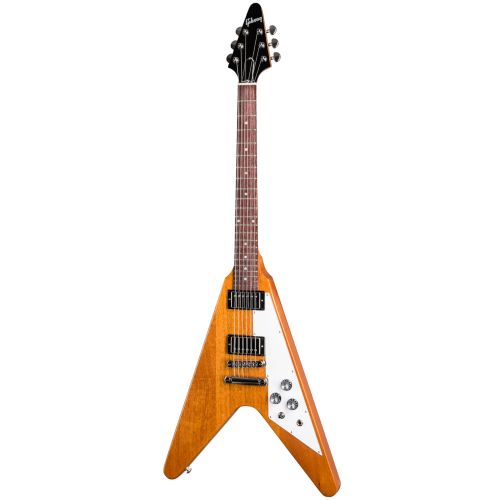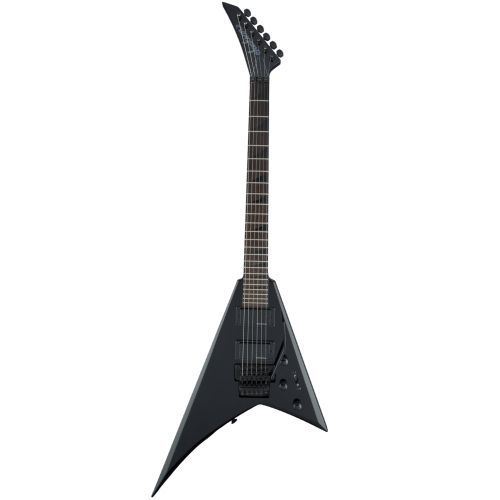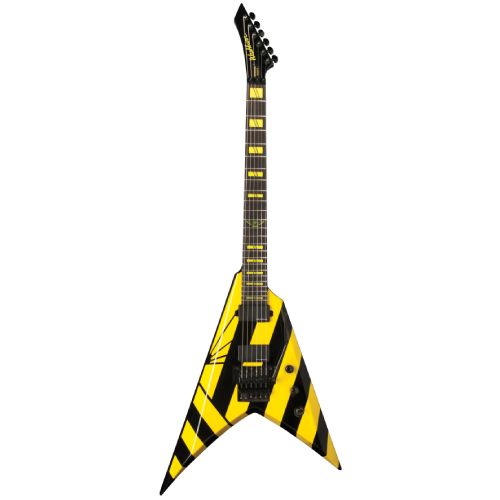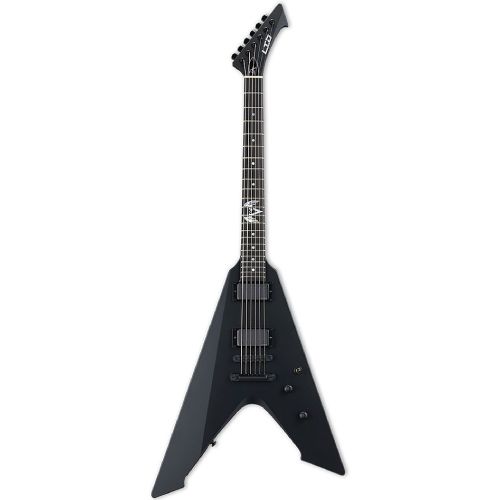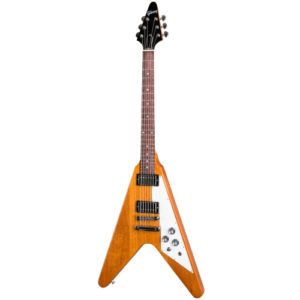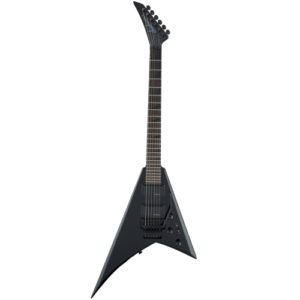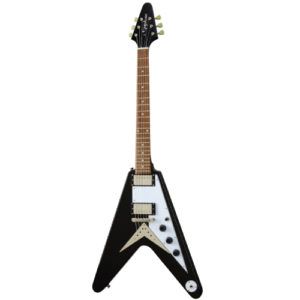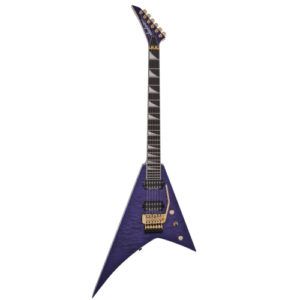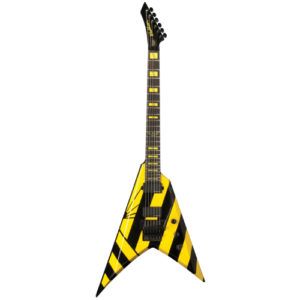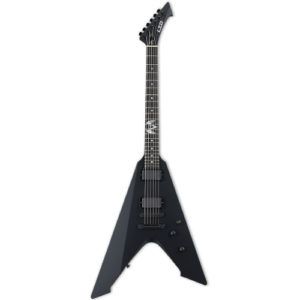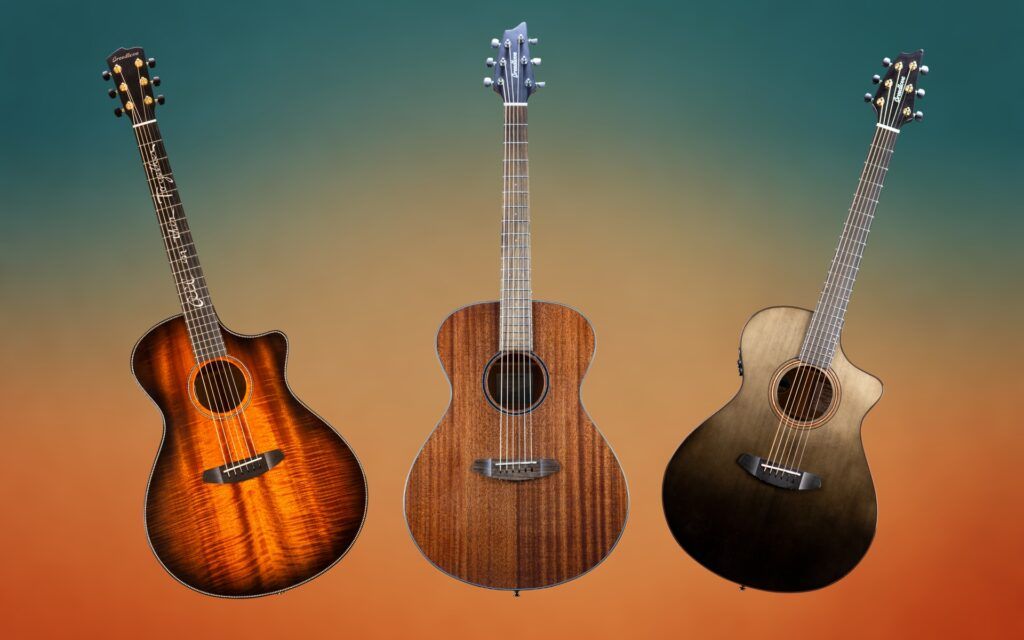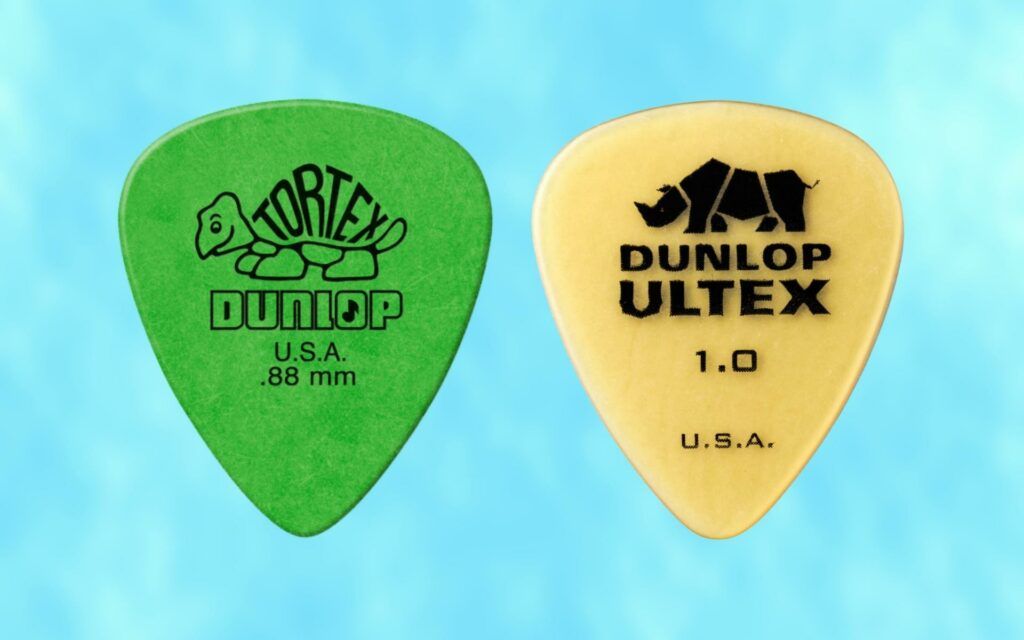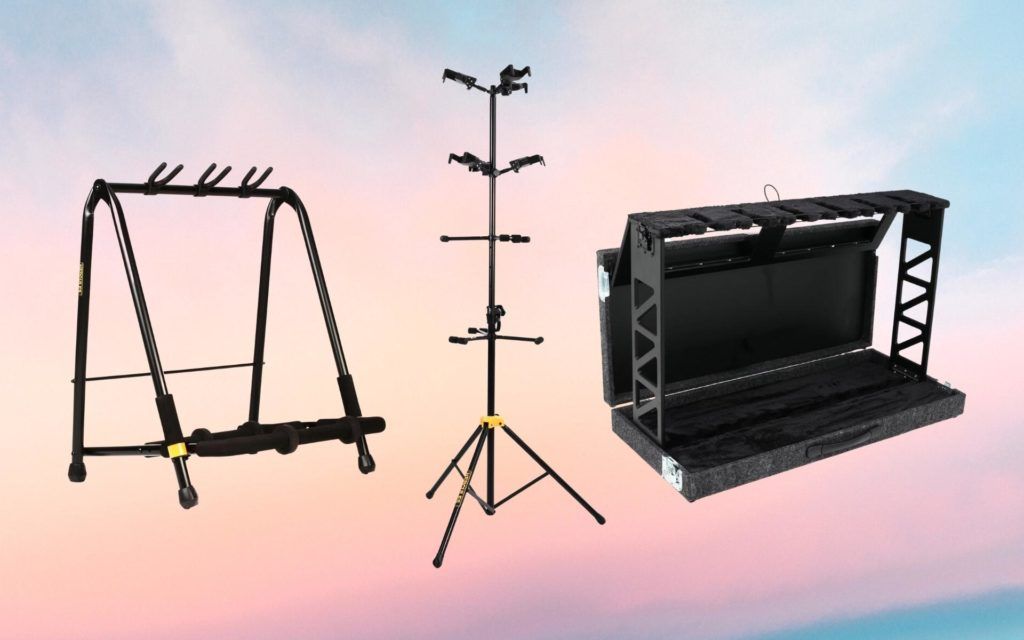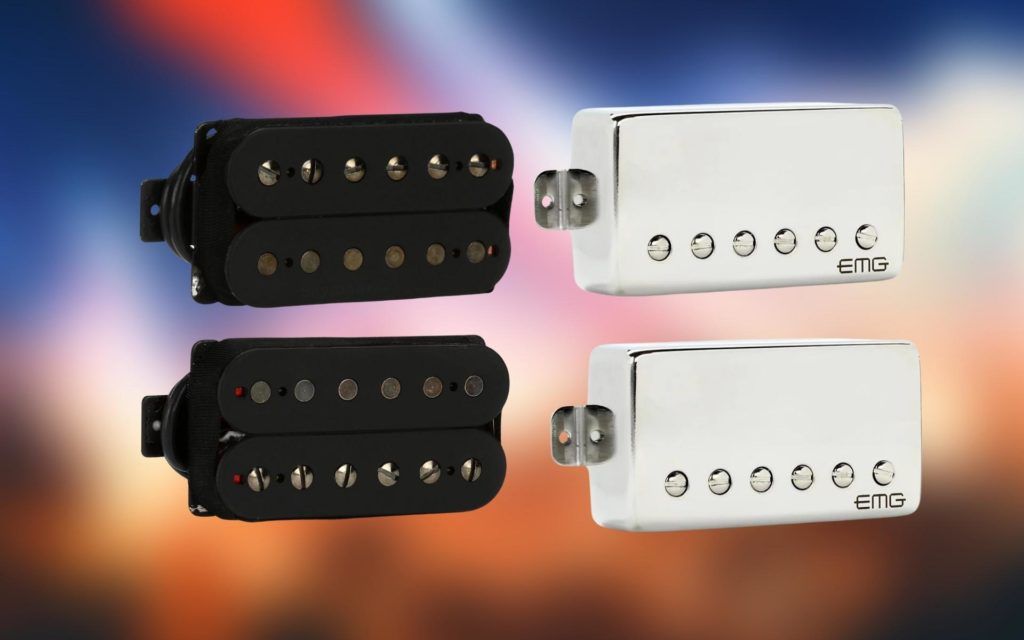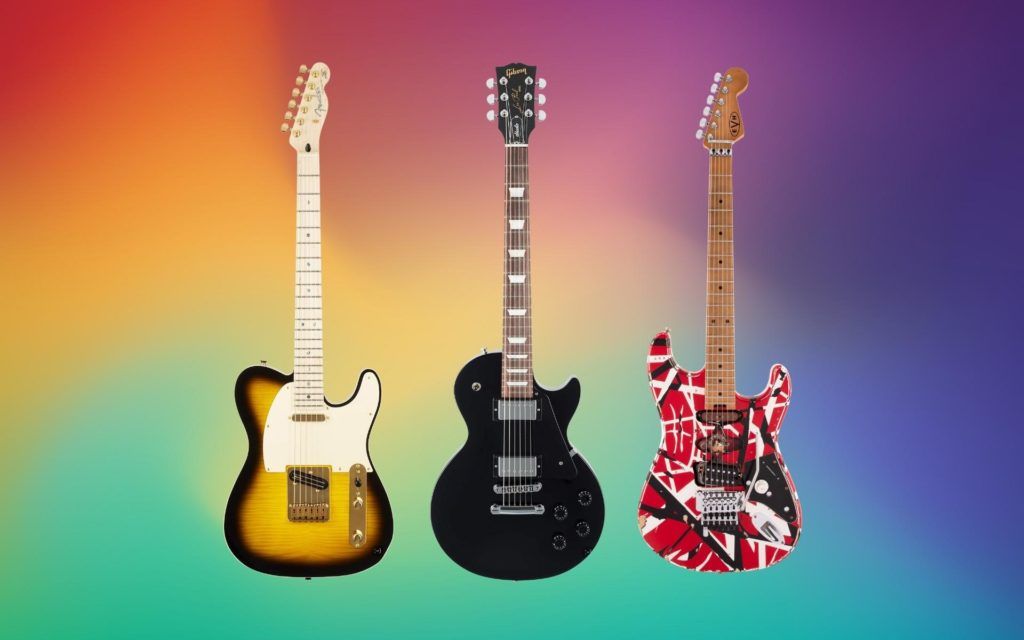We review products independently and our recommendations are genuine. If you purchase through links on our site, we may earn an affiliate commission. Learn More
Renowned for its eccentric, unusual body shape, the Flying V is one of the most recognizable electric guitars ever to be created.
Its popularity has led to many manufacturers making their own versions to rival Gibson’s.
The Flying V was initially released by Gibson in the late 1950s, but due to a lack of popularity, it was discontinued shortly after. In hindsight, Gibson was ahead of its time, and the Flying V has gone on to become a popular rock and metal instrument.
We’ve explored the Flying V style guitar market to identify the best alternatives, and you can find detailed reviews of these instruments in our guide below.
In a Rush Roundup
How We Tested
To get a clear idea of the capabilities of these Flying V style guitars, we ran them through a number of tests. First of all, we assessed their playing comfort by using a range of techniques both in the fretting hand and the picking hand.
We then monitored the sounds these guitars produced when they were used with clean and dirty channels through both solid-state and tube amps, before finally testing their build quality by looking at the materials and construction methods used by the manufacturers.
Best Flying V Body Guitar Reviews
Gibson Flying V
Gibson Flying V Review
There are many great Flying V alternatives available to guitarists, but if you want the best playability, tone, and build quality, this Gibson-made model is a must-have.
One of the main contributing factors to the original Flying V tone was the use of PAF humbucker pickups. Gibson has recreated this by installing its Burstbuckers in the neck and bridge positions, ramping up the clarity of the highs, and increasing the midrange warmth.
The materials used to construct this Gibson Flying V guitar are impeccable. A lightweight mahogany body makes long playing sessions less arduous, and the SlimTaper mahogany neck plays fast and accurately.
Rosewood has been used for the fingerboard, and this improves the feel of the guitar, especially when playing intricate chord shapes or switching from one scale position to another.
Although there’s a modern feel and look to this Flying V guitar, Gibson hasn’t strayed too far from the specs of the original, which was seen as futuristic by many guitarists back in those days!
Features
- Mahogany body and neck
- Rosewood fingerboard
- Burstbucker 2 and 3 humbucker pickups
Pros
- A remake of the original Flying V guitar
- Tight, responsive low-end
- Highly comfortable neck design promotes fast playing
Cons
- One of the more expensive Flying V style guitars on the market
Jackson X Series Rhoads RRX24
Jackson X Series Rhoads RRX24 Review
This V-shaped guitar by Jackson is designed for fast playing and aggressive tones. One of its best qualities is the consistent output it produces in the bass, midrange, and treble frequencies, with no noticeable weak spots.
For such a cheap Flying V guitar, the RRX24 feels very solid and well built. Jackson is renowned for its build quality, and the choice of materials certainly helps this.
The body is made from basswood, which adds resonance and robustness to the guitar. Then, there’s the classic choice of maple for the neck, and laurel for the smooth, responsive fingerboard.
Using a pair of Seymour Duncan humbucker pickups was a very wise move by Jackson, as they produce the ideal amount of output required for metal, heavy rock, and other styles that use a lot of gain.
The AHB-1N in the neck position is slightly hotter sounding than the AHB-1B in the bridge position, which is useful if you like to add more definition to your solos and single-note riffs.
Features
- Basswood body
- Maple neck and laurel fingerboard
- Seymour Duncan Blackouts AHB-1N and AHB1B humbucker pickups
Pros
- Great for accessing the highest frets
- Long note sustain is ideal for soloing
- Floyd Rose tremolo is good for dive bombs
Cons
- Best suited for high-gain, aggressive tones
Epiphone Flying V
Epiphone Flying V Review
For many years, Epiphone has produced excellent replicas of its sibling company, Gibson’s guitars. Whether it’s the Les Paul, 315, or SG, Ephiphones models are very popular amongst guitarists looking for an affordable alternative.
The Flying V by Epiphone looks almost identical to the Gibson version, and its sound is almost on par too.
One common problem with affordable electric guitars is tuning stability, but Epiphone has ensured that the Flying V has no issues in this department by installing Vintage Deluxe tuners with a ratio of 18:1.
This component is joined by a LockTune Tune-o-matic bridge, which, when combined with the string-thru tailpiece adds a solid feel to this well-built electric guitar.
Tonally, the Epiphone Flying V is surprisingly versatile. It offers a tight-sounding bass, with a slightly weak low-midrange. However, this is made up for by the warm and full-sounding upper mids, and the singing high-end.
Features
- Mahogany body and neck
- Indian Laurel fingerboard
- ProBucker 2 and ProBucker 3 humbucker pickups
Pros
- Gibson quality at an affordable price
- Warm, prominent midrange
- Makes forming chord shapes a breeze
Cons
- Sounds a little weak in the lower registers without EQ
Jackson Pro Series Rhoads RR24Q
Jackson Pro Series Rhoads RR24Q Review
The Jackson RR24Q from the company’s popular Pro Series is, to an extent, based on the Randy Rhoads original. Compared to other V-shaped guitars, it produces a more polished, full-sounding tone which suits a variety of styles.
One thing that stood out to me about this guitar was its long sustain, which is consistent across the fretboard. For ringing out chords in the midrange or making high notes wail for longer, this additional sustain is very useful.
The maple neck has been oil-finished, which makes it easier to quickly slide up and down the fingerboard. If you like to transition between chord shapes and octaves, this ultra-smooth neck will improve your playing.
I’m a big fan of ebony fingerboards, mainly because this material perfectly balances a hard feel with a warm, twangy tone. Jackson uses ebony for most of its Pro Series guitars, and this gives them a signature feel.
Seymour Duncan’s high-output humbuckers have been installed on the RR24Q to deliver a powerful tone and excellent dynamics.
Features
- Mahogany body, quilt maple top
- Maple neck and ebony fingerboard
- Seymour Duncan Distortion SH-6N and TB-6 humbuckers
Pros
- Highly compatible with distortion and gain
- Great for fast playing techniques like tapping
- Eye-catching design
Cons
- The clean tone is slightly treble-heavy
Washburn Parallaxe V260FR - Michael Sweet
Washburn Parallaxe V260FR - Michael Sweet Review
Michael Sweet was one of the best-known Flying-V-style guitar players of his era. Known for his huge-sounding riffs and emotive solos, he chose Washburn as his manufacturer for many years.
The Washburn Parallaxe V260FR guitar is excellent in every area. It has a luxurious feeling ebony fingerboard, which makes complex runs and chord shapes feel effortless. The neck is made from hard maple, which allows the fretting hand to apply the ideal amount of pressure.
A highly regarded Buza Feiten tuning system has been installed on the V20FR Michael Sweet guitar. to improve the intonation and ensure that the strings don’t drift out of tune too easily
To recreate Sweet’s classic lead guitar tone, Washburn has turned to the expertise of Seymour Duncan. The two humbuckers installed in the neck and bridge positions are slightly different from each other, but they combine to produce a beautiful, rich tone.
Features
- Mahogany body
- Hard maple neck and ebony fingerboard
- Seymour Duncan HB-105N and HB-105B Blackout humbucker pickups
Pros
- Enhances riffs and solos
- Good note definition across the frequency range
- Fast-playing, comfortable neck design
Cons
- Slightly difficult to reach the highest frets
ESP LTD Vulture
ESP LTD Vulture Review
The Vulture by ESP LTD is constructed predominantly from mahogany, like many of James Hetfield’s signature guitars. This adds a sharpness to the tone and makes each note stand out more noticeably.
When this guitar is combined with a tube amplifier with the gain cranked up, or played through a pedal that adds saturation to the signal, the results are stunning.
LTD locking machine heads have been installed on the guitar to ensure that it stays in tune even when you’re playing with energy and aggression. If you like to play fast, the ebony fingerboard will facilitate this.
EMG Het-Set humbuckers provide a high-octane tone across the frequency range, with particularly powerful low-mids and a high-end that will slice through even the loudest of rhythm sections.
Features
- Mahogany body and neck
- Ebony fingerboard
- EMG JH-N and JH-B humbucker pickups
Pros
- Very good tuning stability
- Sounds exceptional with a tube amplifier
- Thick, humbucker-produced midrange
Cons
- Thin neck profile may be unsuitable for lager-handed guitarists
Flying V Style Guitars Buyer's Guide
Although Flying V-style guitars are unknown to many musicians, there is a surprisingly high number of options that you can choose from.
Most Flying V guitars share physical attributes, but the way they sound a feel to play isn’t always the same.
The original Gibson model divided opinion when it was released in the late 1950s, as more styles and genres have been created over time, more guitarists are open to using less conventional instruments.
Using a Flying V style guitar is likely to attract some attention while performing, but there is more to this instrument than its eccentric pointed body design. Tonally, it offers some unique and interesting qualities.
It’s important to be aware of the components and aspects of a Flying V-style guitar to ensure you choose one compatible with your aspirations.
We’ve outlined all of the things you need to be aware of when identifying the best Flying V style guitar for your requirements below.
Things To Consider When Buying
Consider the pickup types
The vast majority of Flying V style guitars stick to the traditional HH, double humbucker pickup configuration, but there are so e models with single-coil pickups installed to create a hotter tone.
Think about materials
Due to the modified body shape of Flying V-style guitars, the choice of tonewood is even more impactful on the overall sound. Alder, maple, and Korina are commonly used for the body, while rosewood, ebony, and maple are frequently used for the fingerboard and neck. Each of these woods offers a slightly different sound and dynamic response.
Identify the neck profile you need
The original Flying V by Gibson has a Slim Taper neck profile, which promotes speed and playing comfort. Flying V alternatives use a variety of neck profiles, like the thin “U” profile, or modified designs to cater to different playing styles.
Consider the visual design
Some guitars sound and feel good but lack the visual flair of a Flying V-style instrument. These guitars are available in various color schemes and designs, so be sure to consider how this will blend with the other components of your guitar rig.
The Flying V - More Than Just a Gimmick
Although the original run of Gibson’s Flying V guitars only lasted for one year, it didn’t take long for guitarists to realize the sonic potential of the unique body style.
The Flying V, along with the Explorer and Moderne, were three guitars that cemented Gibson’s reputation as the most innovative manufacturer of the era.
Originally, the Flying V was made with a stellar tonewood combination. Mahogany and Korina were used for the neck and body, and a blend of rosewood, baked maple, and ebony made up the fingerboard.
It’s unlikely that you’ll find this exact tonewood mixture on a modern Flying V-style guitar, but if you want to come close to the sound and feel of the original, it’s worth looking out for at least a couple of these materials.
In 1979, Gibson introduced the Flying V2, which has a slightly modified design. Some modern copies are based on this design rather than the original, using a layering technique that gives the body a three-dimensional effect.
The Flying V has been designed with two bridge types – the classic Tune-o-matic and the rarer Short Lyre Vibrola bridge. The former is most likely featured on modern Flying V-style guitars as it is considered reliable for tuning stability.
Flying V Pickups
If you opt for a Gibson or Epiphone-designed Flying V guitar, the chances are you’ll get a pair of PAF-style humbuckers, which pay homage to the original pickups used on early models.
The Gibson Burstbucker is an iconic humbucking pickup that was used on the 1958 Flying V and is still used by the brand on many of its most iconic electric guitars to this day.
Humbuckers are a great choice for Flying V-style guitars because they produce the warm, thick rock n’ roll tones that this type of instrument is renowned for producing.
Some brands, like Jackson, increase the output of the two humbuckers they include on their Flying V-inspired guitars to make them more suitable for heavier playing styles.
If you intend to obliterate your Flying V’s tone with distortion pedals or gain from your amplifier, then choosing a set of high-output, hot-sounding humbuckers will likely be your best option.
Although the Flying V wasn’t initially designed for high-gain tones, it has become a favorite amongst metal and heavy rock guitarists who use it in this way.
Flying V Style Guitars FAQs
Are Flying V Guitars Hard to Play?
Flying V guitars may look different from other solidbody axes, but playing one is the same as any other electric guitar. The only difference is that the cutaway design is more angled, but this doesn’t make the guitar harder to play.
Some guitarists find the shape of the Flying V easier to play because the weight distribution between the body and the neck is different from other electric guitars.
Is the Flying V Good for Beginners?
Although the Flying V could be a good guitar for beginners, it might be a better idea to start with a more conventional electric guitar so that you can comfortably learn the basics.
It’s a little more difficult to sit down with the Flying V body shape than a smaller-bodied electric guitar. The formative stages of learning the instrument often consist of being seated for long periods while you repeat techniques, scales, and chord shapes.
Did Hendrix Play a Flying V Guitar?
Jimi Hendrix’s signature guitar was his famous Fender Stratocaster, but between 1967 to 1969, the iconic musician predominantly used the Gibson Flying V at his live performances.
Hendrix was known to be a fan of the flying V’s eccentric design and the way it sounded.

